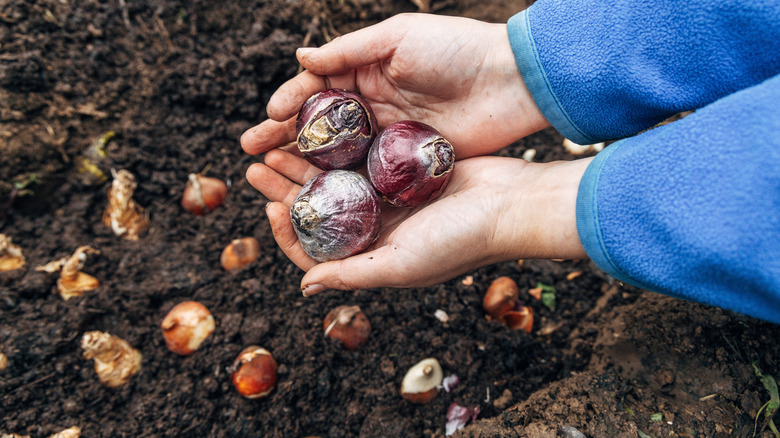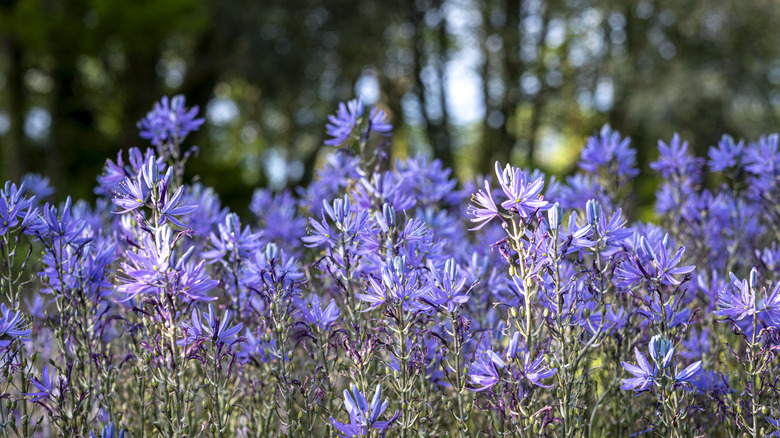Get This Flower Planted Before The End Of October For A Colorful Spring Garden
There's a striking blue flower that provides plenty of height and color in your spring flower bed, but it's often overlooked when it comes to fall bulb planting. Six species are found in the Camassia genus, including Camassia quamash and Camassia leichtlinii, which are frequently used by gardeners. If you're considering adding this plant to your spring bulb collection, time is of the essence, however. Camassia requires cold stratification, so you need to get it in the ground before it freezes.
Because Camassia quamash is native to moist, boggy areas in western North America, it's one plant that thrives in soggy soils. Camassia was a staple food crop of indigenous tribes, as it grows abundantly in places where it's found. Rich in carbohydrates, North American natives prized and harvested this bulb for thousands of years. Today, it's grown more for the graceful beauty that brings visual interest to a spring flower garden than it is for calories, but it's important to note that if you're ever thinking about eating camas bulbs, avoid a close look-alike, meadow death camas (Zigadenus venenosus), by ensuring proper identification.
Cammasia quamash, also known as wild hyacinth and camas lily, is easiest to identify when it's in bloom. In varying shades of blue, the star-shaped flowers line a stalk that rises from the grass-like leaves. It blooms from April to June and grows in USDA Hardiness Zones 3 to 8. Camas can reseed itself, although it takes three to four years for plants to reach maturity.
Enjoy watching camassia thrive with the proper conditions and care
Spring flower bulbs are an important source of early food for pollinators, making camassia cultivars a good choice for pollinator gardens and people who grow fruit trees. They do well along creeks and ponds and are a welcome addition to the moist parts of a rain garden. For the perfect spring flower to plant under cherry blossom trees, choose Camassia leichtlinii 'Blue Danube.' This plant has similar watering requirements and soil needs as fruit trees. Camassia cultivars vary in height from 1 to 3 feet, so be sure to choose a variety that fits your space.
Camassia tolerates full sun to part shade, so if you plant them under a tree, just make sure it's trimmed up enough so they can get some sunlight. October is one of the best months to plant camas bulbs, although you can plant them from September to November, depending on where you live and when the ground freezes. Plant them with the pointed end up about 4 to 6 inches deep in the soil. Each plant should have about 6 to 8 inches of room. Once established, camas lilies become somewhat naturalized, but they're not aggressive or invasive.
Although this is one of the flowering bulbs that you shouldn't grow in containers, there's another reason to mix camassia into your spring flower beds. Since it typically blooms in late spring after daffodils are done blooming, it fills the gap between spring bulbs and summer perennials nicely.

